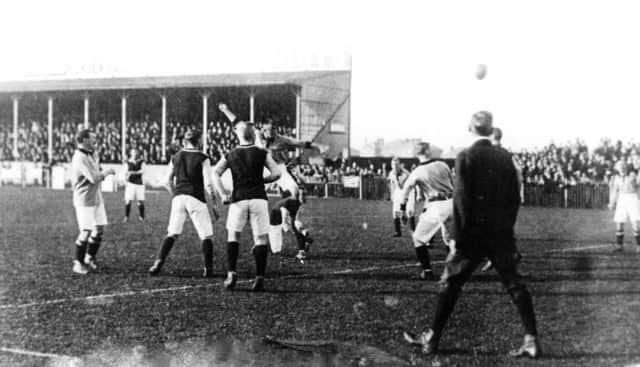From the heat of Egypt to blackberrying at Leigh Park


His father was a glider pilot during the Second World War who then served in Palestine and was posted to Egypt in 1950.
Peter’s mother, brother aged 13 and he, then 11, were able to join him and they lived in married quarters in an army garrison which was surrounded by minefields on the edge of the desert. It was called Tel-el-Kebir.
Advertisement
Hide AdAdvertisement
Hide AdIn January 1952 his father came home early and said the family had to pack what they could carry because all 500 families were being evacuated the next day because of hostilities by the Egyptians. His father had to remain.
The families boarded SS Asturias and returned to the UK. He remembers the date vividly –February 6, 1952 – because while on board an announcement was made that George VI had died.
When they arrived in Southampton they had no home to go to. Although they were from Portsmouth everyone was loaded on to trains and taken to Blackpool where they were put up in boarding houses.
Peter says: ‘I imagine the owners of the boarding houses were only too pleased to be packed out during the off-season – paid for by the army. The change in temperature in February from Egypt to Blackpool was incredible – it took a long time to acclimatise.’
Advertisement
Hide AdAdvertisement
Hide AdHis mother desperately wanted to get back to Portsmouth, so her sister-in-law, who lived at Tipner, went to the housing office to try to find them somewhere to live.
In July 1952 she phoned to say the family had been offered somewhere. She hadn’t seen it, but had to make a decision immediately and had accepted it on the family’s behalf.
That was how they ended up in a Nissen hut in Layton Close (now Redbridge Grove), Bedhampton, not a palace but a ‘home’ at last. Like everyone else he remembers it being very cold in winter. He knew it had been a camp for displaced persons but until he read my book had no knowledge of its naval origins.
Peter said: ‘We always used the gate going out on to Park Lane [from what is now Hazelholt Drive]. At the bottom of Park Lane there was a five-bar gate, then fields and a wonderful area for blackberrying. Hooks Wood was a copse where I must have climbed practically every tree.
Advertisement
Hide AdAdvertisement
Hide Ad‘As you came out of the gate and across Park Lane there was a pond with a rope swing.
To the left of this pond was the bungalow where a lady sold sweets.
Peter adds: ‘Her name was Mrs Grammar and one of the attractions of going there was her parrot that talked and shouted when you rang the bell. It also whistled very loudly.’
Peter says Jessie Road and surrounding houses had not been built. It was all woodland.
Advertisement
Hide AdAdvertisement
Hide AdOne of the highlights of the week was on Thursday evenings when a mobile fish and chip van visited and you could get a pennyworth of batter bits .
One person Peter recognised from my book was Ray Piper.
Ray became a Chief Inspector in Portsmouth Police.
‘When we were in the 3rd Havant Scouts together (Peewit Patrol) he dug the deepest, straightest latrines I’ve ever seen.’
n What a season it’s been.
Promotion not only for Pompey but also Havant & Waterlooville and Moneyfields.
In this photo we see Pompey in salmon-coloured shirts playing West Ham United at Fratton Park.
Advertisement
Hide AdAdvertisement
Hide AdTo the rear is the old north stand. I would imagine it is in the 1920s. I wonder how long it will be before we host the Hammers again?
Note the referee in the dress of the day with magnificent boots and how up with play he is. I recently saw a ref give a penalty when he was 60 yards away!